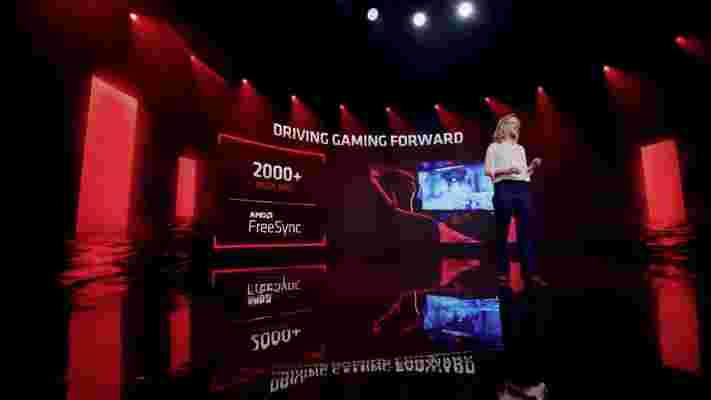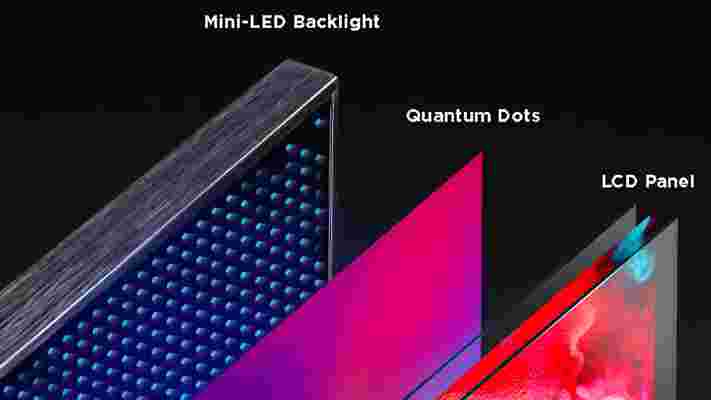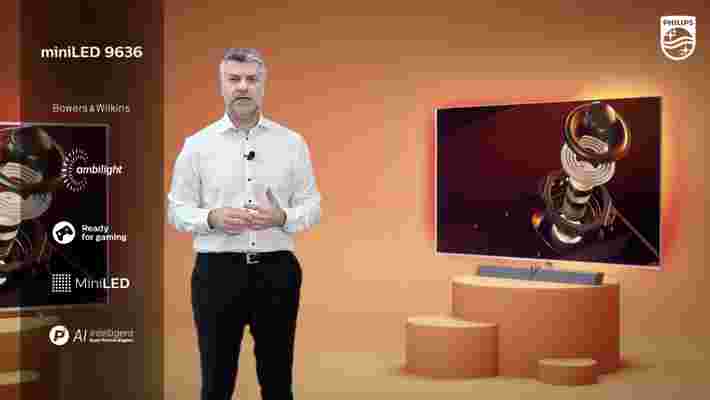LG could launch a transparent OLED TV for the home, bringing the technology to living rooms in 2023.
According to South Korean site The Elec , LG Display is nudging LG Electronics to formally launch a transparent 55-inch OLED TV.
This TV could launch as soon as next year, says the Elec: "If the business unit approves, the development will likely start during the second half of 2022 with a commercial launch in 2023."
LG Display has shown off its much talked about transparent OLED screens at many tech events, including CES 2021. LG is also commercially selling transparent OLED screens, but its transparent OLED TV, unveiled in December 2020 , has so far remained as a concept only.
Currently, LG is the only company specializing in transparent OLED displays. LG claims that its OLED technology is superior, with its panels achieving 40% transparency, where as transparent LCD displays can only offer 10%.
Are transparent TVs suitable for the home?

LG Display developed transparent OLED solutions in a bid to seamlessly bridge the gap between online and physical spaces. LG's transparent OLED boasts a transparency high enough to replace regular glass, as well as the ability to display graphic effects and information in excellent picture quality.
As the transparent OLED displays flaunt a slim design and light weight, they are mostly utilized for industries such as transportation and construction.
LG Display has also demonstrated the potential business benefits of transparent OLEDs through an array of products including 'Shopping Managing Showcase' and 'Show Window' for shopping malls, as well as 'Smart Window' for offices, 'Transparent OLED; for subway trains, and the 'OLED Shelf' that can transform any home interior into a living space.
Panasonic is already selling commercial units of its transparent OLED TVs. Those displays are aimed at commercial applications, such as retail or shopping centers, and not typically for use in the home.

Whether transparent OLED displays really take off as an alternative to regular TVs remains to be seen. In 2020, Xiaomi launched the world's first transparent OLED TV for home called the Mi Lux . With a 55-inch panel supplied by LG Display, the TV was only launched in China, and has since been discontinued.
It might be that OLED TVs just aren't suited to being made see-through. After all, making the panel see-through means you're losing one of the biggest benefits of OLED technology: deep blacks.
In regular OLED TVs, the pixels that don't emit light are black by default. The ability to turn a pixel off entirely is what gives OLED Tvs their infinite contrast and deep, true blacks. In transparent OLED TVs, these pixels are see-through, which means blacks won't be as deep.
LG is said to be working around this issue by using a dimmer, but we'll need to see it for ourselves before we can say whether OLED TVs can successfully work as transparent screens - and whether these are a good idea in the home anyway.
AMD launches Ryzen 6000 laptop processors at CES 2022 to give Intel nightmares
AMD is gunning for Intel’s laptop crown, with Team Red launching its Ryzen 6000 series mobile processors at CES 2022 .
AMD’s desktop Ryzen 5000 CPUs have already been giving Intel a run for its money in PCs, and now it’s taking the fight to laptops, where Intel traditionally has a huge advantage when it comes to market share.
At AMD’s CES 2022 keynote presentation, hosted by Dr Lisa Su, we got a glimpse of the new lineup of Ryzen 6000 laptop CPUs, which use the Zen 3+ core architecture and made with an optimized 6nm process.
This, AMD claims, allows the new laptop processors to not only be more powerful than previous mobile chips from the company, but also more power efficient, bringing some impressive battery life claims.
According to AMD, the Ryzen 6000 series mobile processors are the ‘fastest AMD Ryzen processors yet’, with up to 5GHz clock speeds and 1.3 times faster processing speeds compared with the Ryzen 5000 mobile processors.

Gaming gains
AMD is also claiming that these processors will be ideal for gaming laptops, as they now come with its RDNA 2 built-in graphics – which the company claims is up to twice as fast as its last gen integrated graphics.
With a new display engine, AMD claims it’s the "world’s first on-chip graphics that can smoothly play the vast majority of PC games in full HD". We’re sure Intel will have something to say about that, especially at its own CES 2022 showcase later today, but AMD is suggesting that you could play modern games at 1080p without the need for a dedicated graphics card .
That’s an impressive boast, and if realized could mean thin and light gaming laptops that can handle graphically-intensive games with relative ease (with HDR and AMD FreeSync support to boot). It could also have big repercussions for budget gaming laptops, as without a dedicated GPU, laptops should cost less.
As is usually the case, AMD showed some (no doubt carefully selected) charts which show how the high-end AMD Ryzen 7 6800U performs in certain games against the Intel Core i7-1165G7, claiming up to three times the performance in Doom Eternal at 1080p with low settings, and up to 1.8 times the performance at Fortnite at 1080p at medium settings.
Clearly, you won’t be able to play intensive games like Far Cry 6 at ultra settings and get a good experience, but for an integrated GPU, those are some impressive claims. However, with AMD’s FidelityFX Super Resolution tech, the company is promising around 59fps (Frames Per Second) at 1080p with medium settings (a performance increase of over 50% compared to having FidelityFX turned off, according to AMD).
We look forward to testing AMD’s claims out ourselves later.

24-hour battery life
AMD is also claiming that the power efficiencies of the Ryzen 6000 processors should result in very impressive battery lives for laptops, with up to 24 hours when playing local videos, apparently.
New power management features and a new adaptive power control framework should enable these processors to only use lots of power when they need to, conserving power (and battery life) when not being used for intensive tasks.
Again, according to AMD’s charts, the 6000 series CPUs use 30% less power than the 5000 series when video conferencing using Microsoft Teams, 15% less power when browsing using Google Chrome, and 40% less power when streaming Netflix via Chrome.
With laptop battery life being some people’s biggest concerns when buying a new device, these promises are pretty exciting.
The Ryzen 6000 series mobile processors also support USB4, PCI-E Gen 4, DDR5 and LPDDR5 RAM and Wi-Fi 6E.
With over 200 ‘premium’ laptops expected to release in 2022 with AMD 6000 series mobile processors (starting in February), AMD certainly seems to be putting the pressure on Intel when it comes to laptops , and that could cause Team Blue some real headaches, unless it has something up its sleeve to compete – which knowing Intel, it will have.
This means CES 2022 is one of the most exciting conferences yet for laptops.
What is Mini LED? The TV display tech explained
Mini LED is a type of screen tech found mostly in TV displays. Nowadays most of the major TV makers, like Philips, TCL , LG and Samsung , all have Mini LED TVs available to buy or they’re building new ones with Mini LED’s backlight tech inside them.
Some brands are even combining Mini LED with other kinds of new tech. For example LG's Mini LED TV range of 'QNED' screens are now available worldwide. These TV models have both LG’s NanoCell LCD and Mini LED backlighting for the first time.
What’s more, there are already new TV announcements rolling in from the tech expo CES 2022 . Samsung has announced new TVs at CES 2022 already, including MicroLED, mini-LED and QLED TV models.The new mini LEDs are part of the brand’s Neo QLED TV lineup. The big changes to this line for 2022 are a new feature called Shape Adaptive Light Control that allows the TVs to have better control over blooming and an upgrade to a 14-bit backlight for more luminance points.
But although you’ll find Mini LED in many of today’s newest TVs, you'll find it in other devices with a screen as well. For example, rumors suggest it might also be used in the upcoming Nintendo Switch 2 . Apple also uses Mini LED tech in its all-new MacBook Pro 14-inch (2021) and its new iPad Pro with reports suggesting it could be added to Apple's MacBook Air 2022 and new MacBook Pros as well.
Now Apple is actively adding Mini LED to its latest products, we can expect to see it in even more devices beyond TVs from other brands in the future. It’s a very exciting time for Mini LED tech and if you’re buying a new TV, you need to scrub up on your knowledge.
That’s where you’ll find Mini LED. But how does it work and how does it impact your viewing experience? In the guide below, we’ll cover the technical details of Mini LED, as well as the big question: do you really need a Mini LED TV? Read on to find out whether this new TV tech is right for you.

Now onto what the tech does. As you might guess from the name, Mini LED shrinks the LED modules that provide backlighting to LCD screens.
LCD pixels can’t illuminate themselves – although OLED can – so they need a light source behind them that can shine light through. This is what creates the necessary brightness and color. Because of this extra layer of backlighting, the pixels in an LCD display can never be turned completely off.
How does this impact your viewing experience? It’s best to compare it to an LCD screen. Blacks on an LCD screen don’t just lack the inky quality of their OLED equivalents, but if an LCD TV’s backlight is poorly implemented and controlled, there can be noticeable unevenness to the way the screen describes what should be uniform areas of black.
A good example is if you imagine the end credits of most movies. There’s a black screen with white text scrolling up it. When you’re watching on an LCD TV, it’s normal to see a halo of light around the words, or to let its backlight show ‘bleed’ from the corners of the screen. The result is whatever should be black is now more of a cloudy grey.
We know that no one ever bought a TV solely for how it handles the end credits of a film. But this kind of messy picture quality is what has increasingly made LCD technology look second class compared to its shiny OLED competitor.
However, there might still be a way for LCD technology to reassert itself among the best TVs – and that’s through Mini LED.


LG’s Mini LED range – called ‘ QNED ’ – has immediately become its premium LCD offering, combining Mini LED with quantum dot technology. It’s positioned above the NanoCell LCDs that were previously the company’s most aspirational LCD TVs.
The QNED99 is the hero of the range. It’s an 8K , 120Hz television with full array local dimming (all the better to show off exactly what Mini LED is capable of). It’s available in 65-inch, 75-inch and 86-inch variants. The QNED95 swaps the 120Hz panel of the QNED99 for just 60Hz, but retains the 8K resolution and all the other technological highlights – the 86-inch size aside.
There are a couple of 4K QNED ranges that are similarly arranged. The QNED90 has a 120Hz panel in front of its Mini LED Full Array Local Dimming arrangement, while the QNED85 makes do with a 60Hz panel instead.
Over at Samsung, ‘Neo QLED’ is the way the company is describing its Mini LED televisions for this year. Along with a ‘micro layer’ to guide the light of the Mini LEDs (perhaps as many as 5,000 individual diodes for a single screen) through the quantum dots, Samsung has developed its most precise dimming and power distribution algorithms to date.
All of which bodes well for the chances of the range-topping QN900A . This is an 8K 120Hz screen, available in 65-inch, 75-inch or 85-inch sizes. The QN800A retains the 8K resolution and the selection screen size options – it just doesn’t have quite the whistles-and-bells audio system of the QN900A.
The 4K flag for Samsung is flown by the QN95A and QN90A: these are both 120Hz panels, and both available in 50 in-inch, 55-inch, 65-inch, 75-inch and 85-inch screen sizes. The QN95A also features Samsung’s One Connect box , which takes all connectivity requirements away from the screen itself. There’s also the QN85A, which retains the 120Hz panel of its siblings but doesn’t have quite as many dimming zones or speaker drivers.
Philips, of course, has its unique selling point to bring to the Mini LED party: Ambilight . Both the 9639 and 9506 are available in 65-inch or 75-inch sizes, and both have four-sided Ambilight as well as Mini LED backlights. As with LG, Philips’ Mini LED TVs slot into the television series just below the pricier OLED ranges.